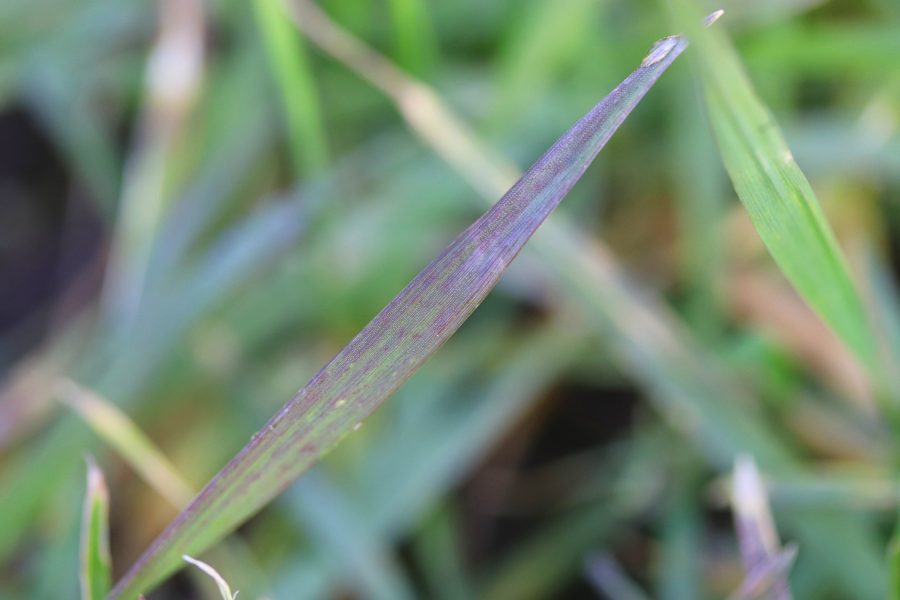Tim Kerr, nutrition manager, looks at ways to ensure adequate phosphate availability.
Purple is often termed the rarest colour in nature, yet seeing it in fields is not always a great sign, and purpling of leaves due to phosphate deficiency can be all too common a sight.
Anthocyanins are naturally occurring pigments that help to give aubergines, blueberries and blackcurrants their colour, but they also act as a sign of phosphate deficiency, and it is anthocyanins that cause this purpling in crops like cereals and maize.
Crops that are grown on soils that have adequate soil phosphate according to lab analysis are not immune to showing symptoms of phosphate deficiency, so why would this be and what can be done?
Unlike mobile nutrients such as nitrogen, sulphur and potassium, phosphate tends to stay where it is in the soil. Also, much of the phosphate is not in an available form, relying on soil properties to make it plant available.
Plants can only acquire phosphate from the soil water, and this needs constant replenishment to keep up with demand. This renewal relies on soils actively converting phosphate into available forms, which can grind to a halt in inclement conditions and is made worse by poor soil structure.
So, if soils are cold, wet or compacted, the amount of phosphate that roots can access will be limited, and as a result transient phosphate deficiencies are often seen in early spring, when these conditions apply.
What can be done?
We advocate the placement of phosphate at planting to enrich the soil which the roots will occupy in the development stage. Doing this helps to overcome shortfalls that may occur due to soil conditions that can’t be controlled.
Placing phosphate is also an efficient way of using a valuable, yet potentially damaging resource. Placing it decreases the risk of phosphate losses via soil erosion and can reduce the amount needed to meet crop requirement, because the fertiliser is put in the right place at the right time.
If there is sufficient phosphate in the soil but the roots are not exploring enough of the soil to obtain enough of it, what can we do to create more roots?
Phosphites are a class of biostimulants that are clearly understood to enhance rooting and have been scientifically proven to do so. Typically increasing root biomass by 30%, they will have a significant role in supporting phosphate uptake through this increase, which will have other benefits in nutrient and water uptake throughout the plant’s life.
Is phosphate so important? Does it matter if the plant runs short?
Phosphate, like all essential elements, is not replaceable by another nutrient. Adequate phosphate increases nitrogen use efficiency and plays a key role in photosynthesis, as well as being vital for energy transfer, and will also promote a healthier plant which is less susceptible to disease.
Five steps for managing phosphate
- pH is crucial to phosphate availability – optimum pH of 6.5 is ideal
- Utilise organic sources where possible; they are a great way of buffering the soil phosphate and helping to maintain it in a form less likely to lock up in the soil
- When applying phosphate fertilisers, wherever possible place them or band them at planting
- Use phosphites to improve rooting and consequently improve the plants’ ability to acquire phosphate from the soil
- Use nutrients in balance as part of a plan; all essential nutrients have a role to play, and planning will hopefully avoid deficiencies.
For more like this, sign up for the FREE South East Farmer e-newsletter here and receive all the latest farming news, reviews and insight straight to your inbox.







